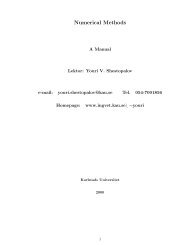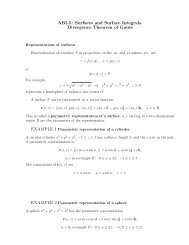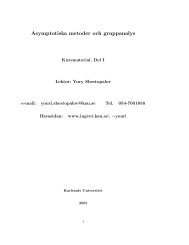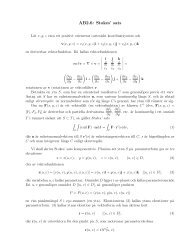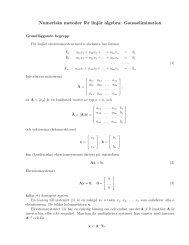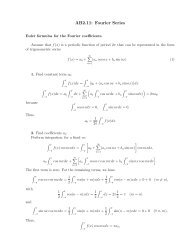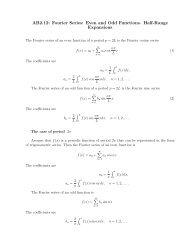You also want an ePaper? Increase the reach of your titles
YUMPU automatically turns print PDFs into web optimized ePapers that Google loves.
Therefore the solution isφ(x) = f(x) + λc sin x = f(x) + λ∫ 2πExample 12 Consider a Fredholm IE of the 2nd kindx 2 = φ(x) −∫ 100sin x cos yf(y)dy. (154)(x 2 + y 2 )φ(y)dy, (155)where K(x, y) = x 2 +y 2 is a degenerate kernel f(x) = x 2 is a given function, and the parameterλ = 1.9.2 IEs with degenerate kernels and approximate solution of IEsAssume that in an IE∫ bφ(x) − λ K(x, y)φ(y)dy = f(x) (156)athe kernel K(x, y and f(x) are continuous functions in the squareΠ = {(x, y) : a ≤ x ≤ b, a ≤ y ≤ b}.Then φ(x) will be also continuous. Approximate IE (156) with an IE having a degenerate kernel.To this end, replace the integral in (156) by a finite sum using, e.g., the rectangle rulewhereThe resulting approximation takes the form∫ bn∑K(x, y)φ(y)dy ≈ h K(x, y k )φ(y k ), (157)ak=1h = b − an , y k = a + kh. (158)n∑φ(x) − λh K(x, y k )φ(y k ) = f(x) (159)k=1of an IE having a degenerate kernel. Now replace variable x in (159) by a finite number ofvalues x = x i , i = 1, 2, . . . , n. We obtain a linear equation system with unknowns φ k = φ(x k )and right-hand side containing the known numbers f i = f(x i )n∑φ i − λh K(x i , y k )φ k = f i , i = 1, 2, . . . , n. (160)k=1We can find the solution {φ i } of system (160) by Cramer’s rule,φ i = D(n) i (λ), i = 1, 2, . . . , n, (161)D (n) (λ)31




